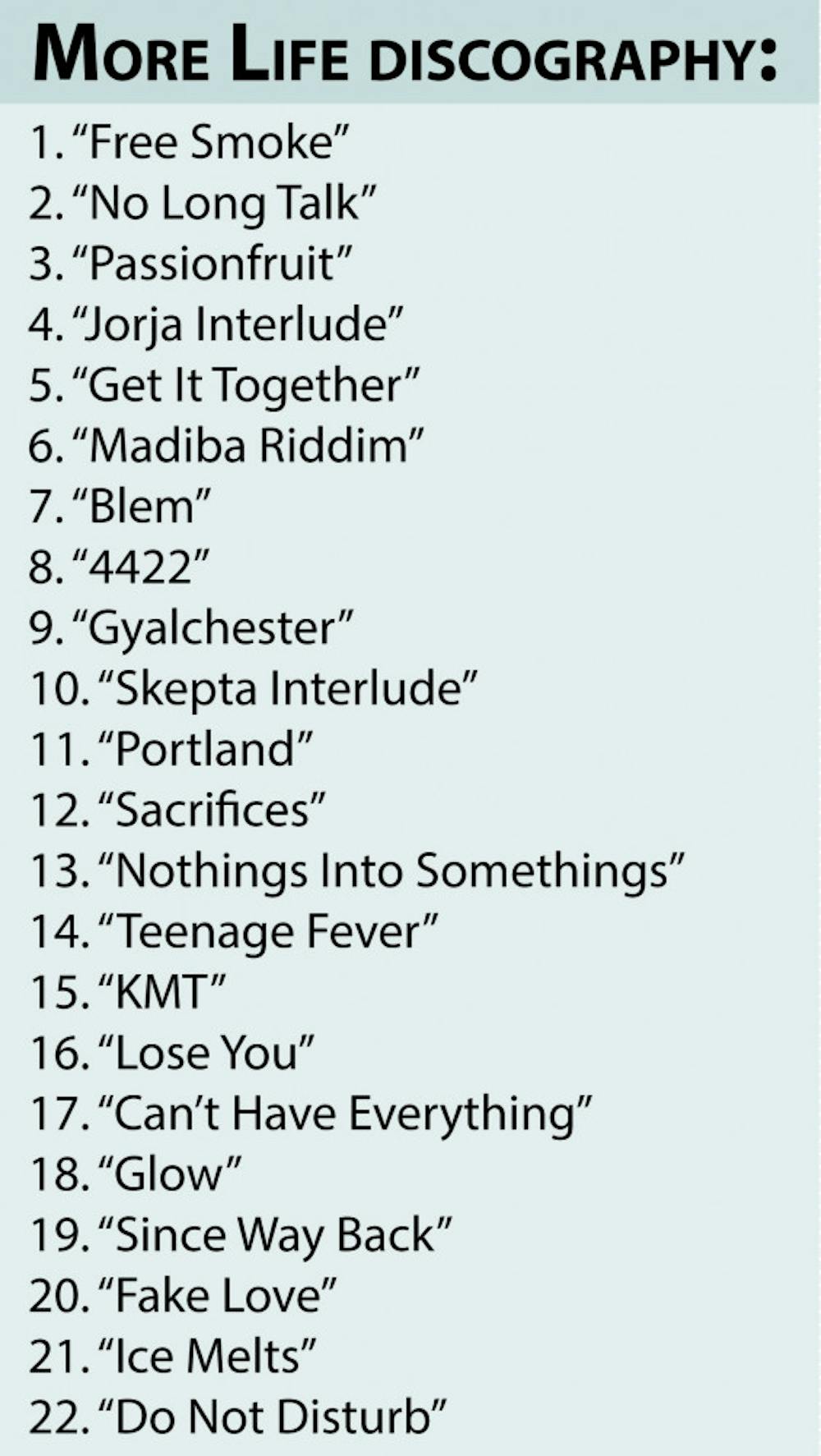Drake may very well be the most difficult-to-pin-down personality in popular music — a far cry from his once glaring predictability. The musician first made waves with the emotive hip-hop of songs like “Take Care” and “Marvin’s Room,” effectively bridging the gap between romantically-frustrated emo and the showy, vulgar rap made famous by Young Money labelmate Lil Wayne. Drake’s distinctive style of confessional rap, poked fun at by thousands of internet memes, became a calling card for the artist.
But by 2013, the rapper began expanding his career-defining dejection to broader territory on the LP “Nothing Was The Same,” fluctuating between the hardened persona featured in the aggressive cut “Worst Behavior” and the more straightforward pop of his infectious single “Hold On, We’re Going Home.” The erstwhile “sadboy” continued this experimentation on his critically-acclaimed 2015 mixtape “If You’re Reading This It’s Too Late,” cementing his newly assertive image with the mix’s bold, in-your-face trap instrumentation and soon-to-follow disses directed at fellow rapper Meek Mill. Highly anticipated “Views” dropped in 2016, further complicating his personal brand — this time, to profound disappointment. The blatant misogyny of tracks like “Child’s Play” evinced a less-than-endearing aspect of Drake’s aggression, while chart-toppers like “Hotline Bling” reflected a descent into treacly and nondescript pop. No longer interesting or revelatory, the Drake displayed on “Views” had many fans believing the rapper might have been better off in his formulaic forlornness.
Drake’s latest stroke in artistic formlessness, 2017’s “More Life,” does not resolve the frustrating ambiguity of “Views.” Marketed as a pseudo-playlist of disparate songs rather than a traditional album, the release capitalizes on the rapper’s musical variability. On “More Life,” Drake flirts with everything from Caribbean dancehall to English grime, exploring a breadth of artistic styles. However, just like most dilettantes content to dabble in every discipline under the sun, Drake is successful in capturing a variety of musical influences but fails to succeed in defining his personal brand in the release’s half-baked attempts at genre-hopping. His project, for the most part, includes nothing particularly exceptional, as demonstrated by the awkward efforts of “Lose You” and “No Long Talk,” featuring Giggs. By attempting to communicate through such a wide array of genres, Drake ends up saying very little.
The LP, pretentiously labeled as a “playlist,” has just as many guest features as it does musical styles. Luckily, however, the guests are sampled from the different genres Drake explores, adding actual credibility and authenticity to the tracks. These guest cuts often leave Drake out of the spotlight entirely, granting fresh artists culled from diverse genres the opportunity to truly flesh tracks out. The song “4422” displays the deft talents of electronic artist Sampha, while “Get It Together” with South African DJ Black Coffee and British singer Jorja makes for a cathartic piece of South African house music that would have been impossible for the Canadian rapper to create solo.
Rather than advertising the work as the sole product of Drake, the album’s (er, “playlist’s”) cover art attributes the music to “October Firm” — a shadowy collaboration that implies a collective effort. And justly so. Indeed, the playlist is often at its best when Drake is left at the wayside, with the guests in full control. On iTunes, Spotify and elsewhere, however, the work is still officially that of Drake, who falls short of the mark relative to most of his guests. To listeners’ dismay, the hip-hop artist is still left at the helm for most tracks. But lead single “Passionfruit,” one of the release’s solo efforts by Drake, stands apart as an irresistible and exceptionally well-crafted song. Drake combines his current world music influences with an infectious chorus that echoes the desperation Drake so exclusively (and exquisitely) sang of in the past. “Passionate from miles away / Passive with the things you say,” he sings. And just as it did on “Views,” the Drake of yesteryear does feel miles away on “More Life.” But for once, Drake actualizes artistic progression toward his newfound cosmopolitan soundscape without sacrificing his beloved and identifiable “sadboy” persona.
Experimentation in music can be a healthy exercise in creativity. Fleetwood Mac, for example, started out as a mid-level blues band seemingly doomed to spend its lifetime mired in mediocrity. Thankfully, they eventually evolved into the “Landslide”-singing and record-shattering soft rock band that history came to know them as. Such trial and error can be necessary early on for an artist. But Drake, 11 years into his career, can no longer afford to vacillate between musical styles. “More Life” is still worth a listen, largely thanks to its guest features. Drake, the shape-shifter and genre-greenhorn, however, is seriously in need of saving and re-defining his personal brand.





